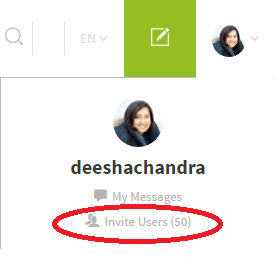The best ideas arise when people work together. Online crowdsourcing platforms transcend physical boundaries, bringing together disparate voices and resources to build new ideas. Crowdsourcing can be a great tool to attract people with different mindsets.
The model works particularly well for start-up challenges, which draw participants with an entrepreneurial spirit – something that may not be common among your immediate peers.
At this point, you’ll be thinking about who you want to involve in your challenge and how open it will be. Many platforms will give you an option to control who can access your challenge. Idea-management platforms, such as Crowdicity, and Babele, allow the following options.
a) Open community
This means that anyone can sign up to the community, there’s no moderation needed for joining and content is visible to all. Participants will need to create a profile in order to add messages.
Open challenges strengthen ties with your existing network and supporters by offering them an open space to connect and find collaborators to support their ideas. While you may attract participants who specialise in the challenge theme, you can’t guarantee the online community will be filled with experts.
NOTE: You can run challenges that are open to both your team and external participants at the same time, but there’s a risk that one of the groups will become frustrated. For example, if an internal winner is chosen, the external participants may be under the impression that they did not have a real chance – and vice versa. Therefore, this set-up is not recommended.
b) Closed community
For closed settings, community managers will need to invite users to join the community. The platform content will only be visible to these members.
You may intend to restrict the implementation of ideas or the focus of a challenge to a specific city or country – that’s fine, but these things will need to be stated in the joining instructions.
NOTE: Although there may be a geographical limitation to your challenge, we recommend you invite participants from various backgrounds and sectors. For example, if your challenge focuses on biodiversity in Austria, participants from Kenya may still be able to offer a new insight and may like to participate in a challenge even if they cannot win.
c) Closed with invitations
This involves having a closed community, but allowing participants to invite others.

Comparison
We've briefly listed the broad advantages of each type of community below.

Intellectual property
In order to have the best chance of gaining funding or investment, participants will need to have the greatest impact they can, and that means sharing their learning with others. We’ve only had a small number of cases where people wanted to keep everything secret.
We suggest telling participants that you expect them to share their learning, but that you don’t expect them to share highly detailed technical knowledge online. Most participants will not have the legal or financial grounds to protect an idea as intellectual property, and if they can’t deal with people knowing about their concept, then it is unlikely they will gain many supporters or succeed during the online challenge process.
Guy Kawasaki has written that in his experience as a venture capitalist, “stolen” ideas rarely succeed. If people can’t agree on the rules, then we suggest you keep them out – it’s important to create a culture of collaboration, and it’s counterproductive to have people who fight that culture. Click here for a sample blog you can add to your platform to explain this.
In order to have the best chance of gaining funding or investment, participants will need to have the greatest impact they can, and that means sharing their learning with others. We’ve only had a small number of cases where people wanted to keep everything secret.
